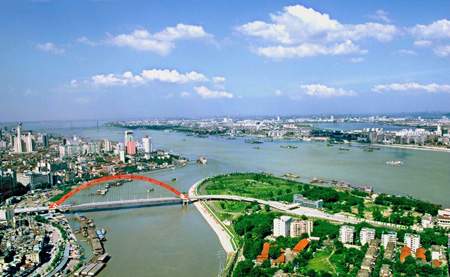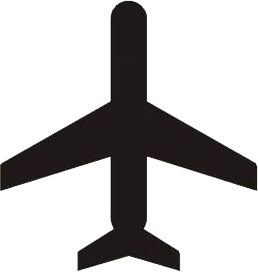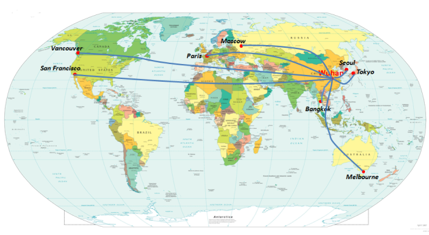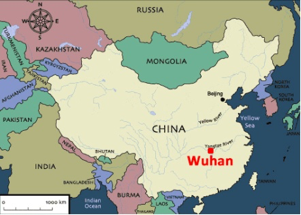About Wuhan
 Wuhan opened to trade in 1861, right after the Second Opium War. The British had finally received foreign trade rights in Hankou. In 1898, Zhang Zhidong, the Governor-General, sought to bring great changes and began a program of education and industrial modernization. He set up Wuchan to become a very modern, industrial city. The Wuchan Uprising overthrew the Qing Dynasty and finally ended the imperial rule of the county. When Japan threatened in 1927, the Kuomintang decided to move the central government to Wuhan. At the start of the Second World War in 1938, Wuhan was overtaken by Japan and it became the major logistics center for southern China. Just a few years later in 1944, the city was almost completely destroyed by the United States. The Chinese rebuilt their beloved city, only to civil unrest strike in 1967, commonly referred to as the Wuhan Incident. This was the result of severe tension brought on by the Cultural Revolution.
Wuhan opened to trade in 1861, right after the Second Opium War. The British had finally received foreign trade rights in Hankou. In 1898, Zhang Zhidong, the Governor-General, sought to bring great changes and began a program of education and industrial modernization. He set up Wuchan to become a very modern, industrial city. The Wuchan Uprising overthrew the Qing Dynasty and finally ended the imperial rule of the county. When Japan threatened in 1927, the Kuomintang decided to move the central government to Wuhan. At the start of the Second World War in 1938, Wuhan was overtaken by Japan and it became the major logistics center for southern China. Just a few years later in 1944, the city was almost completely destroyed by the United States. The Chinese rebuilt their beloved city, only to civil unrest strike in 1967, commonly referred to as the Wuhan Incident. This was the result of severe tension brought on by the Cultural Revolution.
This great city is a transportation hub for China. It has dozens of roads, expressways, and railroads which pass through the city. The First Yangtze River Bridge, constructed in 1957, finally gave Wuhan fast railroad access to the remainder of China. Today, Wuhan has a population of over 9.2 million people. It has become recognized worldwide as the economic, financial, educational, and cultural center for central China.
Arrival Transportation
Airline
 Wuhan Tianhe International Airport is situated in the north of the city, about 25 minutes to the city center by bus. International direct flight between Wuhan and the following cities: Melbourne, Tokyo, Seoul, Ho Chi Minh City, Singapore City, Bangkok, Moscow, Vancouver, San Francisco, Los Angles, Paris, etc. And multi-flights scheduled to some main cities in home such as Beijing, Shanghai, Nanjing, Zhengzhou, Guangzhou, Nanchang, Fuzhou, Wuhan, etc. The nonstop to the airport from city center is available every one hour, with a fare of RMB15.
Wuhan Tianhe International Airport is situated in the north of the city, about 25 minutes to the city center by bus. International direct flight between Wuhan and the following cities: Melbourne, Tokyo, Seoul, Ho Chi Minh City, Singapore City, Bangkok, Moscow, Vancouver, San Francisco, Los Angles, Paris, etc. And multi-flights scheduled to some main cities in home such as Beijing, Shanghai, Nanjing, Zhengzhou, Guangzhou, Nanchang, Fuzhou, Wuhan, etc. The nonstop to the airport from city center is available every one hour, with a fare of RMB15.
Airport Enquiry: 027-85818888
Southern Airlines Enquiry: 027-85300000
Eastern Airlines Enquiry: 027-63623820


Railway
 As one of the important hubs in middle China, the transport network in Wuhan extends in all directions. Every day 77 trains depart from Wuhan and 120 trains pass it. It is convenient for touirsts to almost all the tourist cities including Beijing, Shanghai, Guilin, Xian, Kunming, Guangzhou and much more from Wuhan. Most trains depart from the Hankou Railway Station and the Wuchang Railway Station. Pay attention to which station your train will depart after get your tickets.
As one of the important hubs in middle China, the transport network in Wuhan extends in all directions. Every day 77 trains depart from Wuhan and 120 trains pass it. It is convenient for touirsts to almost all the tourist cities including Beijing, Shanghai, Guilin, Xian, Kunming, Guangzhou and much more from Wuhan. Most trains depart from the Hankou Railway Station and the Wuchang Railway Station. Pay attention to which station your train will depart after get your tickets.
Wuchang Railway Station: 027-67264232
Hankou Railway Station: 027-67237022
City Transportation
By bus
 By far, to take a bus is the cheapest way to move around. There is a comprehensive public bus service that covers the whole Wuhan so that the bus can take you to wherever you want to get. The common fee for the bus is RMB 1, RMB 2 for the air-conditioned bus and the double-decker bus.
By far, to take a bus is the cheapest way to move around. There is a comprehensive public bus service that covers the whole Wuhan so that the bus can take you to wherever you want to get. The common fee for the bus is RMB 1, RMB 2 for the air-conditioned bus and the double-decker bus.
By light rail
 On July, 2004, light rail (qīng guǐ 轻轨) in Wuhan has been run for the first time. It is popular with people for its safe, arriving on schedule, and cleanness. It will costs you RMB 1.5 to get to the station you want. Tickets are bought from vending machines in the stations. You can get a black coin as the ticket, which you will need at the entrance of the platform and at the exit, after you put the money into the vending machines. At the customer service counter, you can get some small change.
On July, 2004, light rail (qīng guǐ 轻轨) in Wuhan has been run for the first time. It is popular with people for its safe, arriving on schedule, and cleanness. It will costs you RMB 1.5 to get to the station you want. Tickets are bought from vending machines in the stations. You can get a black coin as the ticket, which you will need at the entrance of the platform and at the exit, after you put the money into the vending machines. At the customer service counter, you can get some small change.
By taxi
 It is a convenient way for foreigners to get around. The starting charge is RMB 3 for the first 1 kilometers, and RMB 1 fuel surcharge is now added. You can call 027-59210000 if you want to book a taxi. But you need to book one two hours ahead of schedule.
It is a convenient way for foreigners to get around. The starting charge is RMB 3 for the first 1 kilometers, and RMB 1 fuel surcharge is now added. You can call 027-59210000 if you want to book a taxi. But you need to book one two hours ahead of schedule.
By ferry
Ferry is a best choice if you want to go across the Yangtze River in Wuhan. It is cheap and fast. RMB 1.5 per person for the common ferry, and RMB 5 per person for the sight-seeing ferry. And you need you add RMB 1 if you take a bicycle to the ferry.
Weather
Wuhan’s climate is humid subtropical with abundant rainfall and four distinctive seasons. It is known for its oppressively humid summers. Because of its hot summer weather, Wuhan is known as one of the Three Fumaces of China, along with Nanjing and Chongqing. The average high temperature in July is 37.2℃ and the maximum oftern exceeds 40℃. Spring and antumn are generally mild, while winter is cool with occasional snow. In recent thirty years, the average annual rainfall is 1269mm, maily from June to August, annual temperature is 15.8℃-17.5℃. Although the temperature in Wuhan's winter is not as low as those in the northern cities in China, the river winds and humidity can make it as cold as ten degrees below zero. For winter travel, bring heavy overcoats, gloves and scarves to protect against the wind and cold.

Insurance
The registration fee does not include insurance for the participants regarding accidents, sickness or loss of personal property. It is advisable to make your own arrangements in respect of health and travel insurance before leaving your countries.
Currency Exchange
In China, only RMB is used. However, exchange centers can be found at airports, most hotels and large shopping centers. The exchange rate is due to the official rate (Bank of China). When exchanging money, please keep your receipt by which you can change any remaining RMB back to foreign currency when leaving China. Visa, Master, American Express are accepted in many department stores and hotels. ATM could help you for changing RMB from your credit card.
Reconfirmation of Air Ticket
Departure air ticket (both international and domestic) should be reconfirmed 72 hours in advance. Calling the airline office in Beijing could make it. But these offices do not work in weekend.

